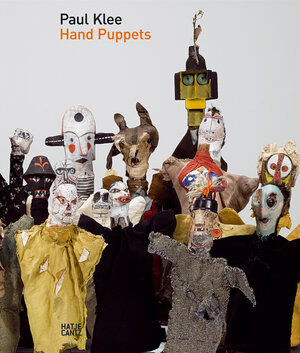
×
![Buchcover ISBN 9783775717403]()
Between 1916 and 1925 Paul Klee (1879-1940) created a total of around fifty hand puppets for his son, Felix, of which thirty are still in existence. For the heads, the artist used materials from his own household: beef bones and electrical outlets, bristle brushes, leftover bits of fur, and nutshells. The first costumes were sewn by Sasha Morgenthaler, who later became a well-known puppet maker, but Klee soon took over this task himself. Although the hand puppets are a group of works that do not strive to be great art, they reflect the artistic and social developments of their time. For instance, the chronological proximity to Dada and the collages by Kurt Schwitters can be seen in Klee's Specter of the Matchbox, and with the German Nationalist he caricatured a political type of the day. This volume presents Paul Klee's superbly imaginative hand puppets and describes each figure in detail. An introductory essay is dedicated to Klee's connection to the theater, his relationship to the puppets made by other avant-garde artists, and his sculptural works. Klee's son, Felix, and his grandson, Alexander, relate how the figures were created. (German edition ISBN 978-3-7757-1739-7; French edition ISBN 978-3-7757-1741-0)


